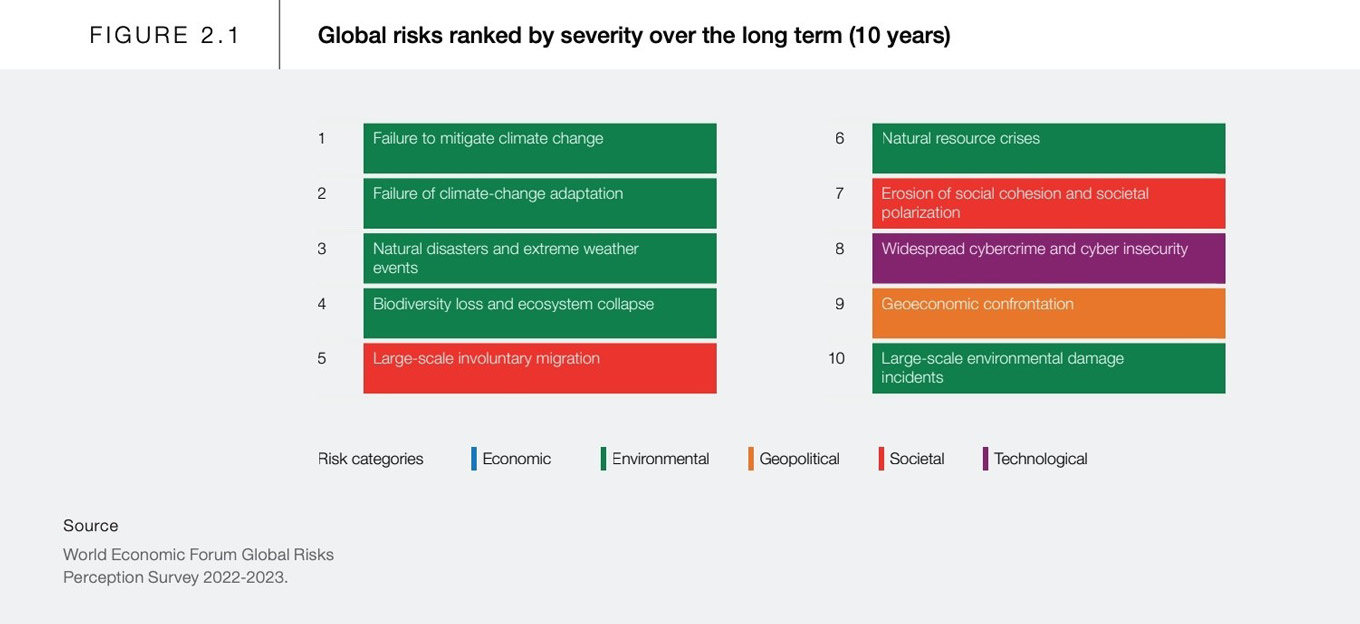
— A rewilding project in Africa aims to release 2,000 white rhinos bred in captivity into national parks over the next decade.
— The World Economic Forum’s Global Risks Report 2023 has identified loss of biodiversity and ecosystem collapse as one of the top global risk factors over the next decade.
— The white rhinoceros has clawed its way back from near extinction over the last century but a major rewilding project will see 2,000 white rhinos bred at a rhino farm released in national parks across Africa over the next decade — a major boost to biodiversity.

Rewilding to protect the species’ future
The 2,000 rhinos now being released were bred in captivity at a large-scale farm dedicated to the species’ conservation. The operation ran into financial difficulties and the entire farm was put up for auction, Euronews reports.
African Parks, a non-profit conservation organization that works throughout the continent, came to the rhinos’ rescue. With the endorsement of the South African government and emergency funding from its donors, African Parks acquired the farm.
The plan is to release the animals – and their future offspring — in groups of around 300 a year over the next 10 years. They will be rehomed in protected conservation areas, either to boost existing populations or create new ones to ensure the future of the species.
The non-profit operates 22 national parks across the continent and has experience of rewilding large numbers of rhinos in countries such as Malawi, Rwanda and the Democratic Republic of Congo.
The CEO of African Parks, Peter Fearnhead, stated: “We will be working with multiple government partners, donors and conservation organizations who are committed to making this rewilding vision a reality. Sourcing additional funding will be key in ensuring that these animals can once again play an integral role in fully functioning eco-systems.”
The rhinos will contribute to Africa’s ecosystems by aiding nutrient cycling, storing carbon, and creating new sources of tourism revenues for local communities, African Parks has said.
White rhinos: Coming back from the brink
White rhinos, desired for their horns, were believed hunted to extinction in the late 19th century. However, in 1895, a small pocket of fewer than 100 animals was discovered in Kwazulu-Natal, South Africa.
Since then, conservation efforts have raised their numbers back to around 16,000, according to the WWF.
Most of these are southern white rhinos, as only a couple of females of the northern subspecies still exist.
They currently occur in just four countries: South Africa, Namibia, Zimbabwe and Kenya and are still considered “near threatened” by the World Wildlife Fund (WWF).

Biodiversity — at risk
According to the WWF, global biodiversity has fallen over 68% in the past four decades. In its Global Risks Report 2023, the World Economic Forum identifies loss of biodiversity and ecosystem collapse as one of the top risk factors over the next decade.
The report underlines the close relationship between nature loss and climate change, with a failure in one area directly affecting the other.
It recommends a focus on community resilience and local adaptation in preserving biodiversity — both significant factors in the success of the rhino rewilding project — as a way of contributing to climate change mitigation globally.
This article was originally published by the World Economic Forum on September 26th, 2023 — and was made available to Good Good Good.